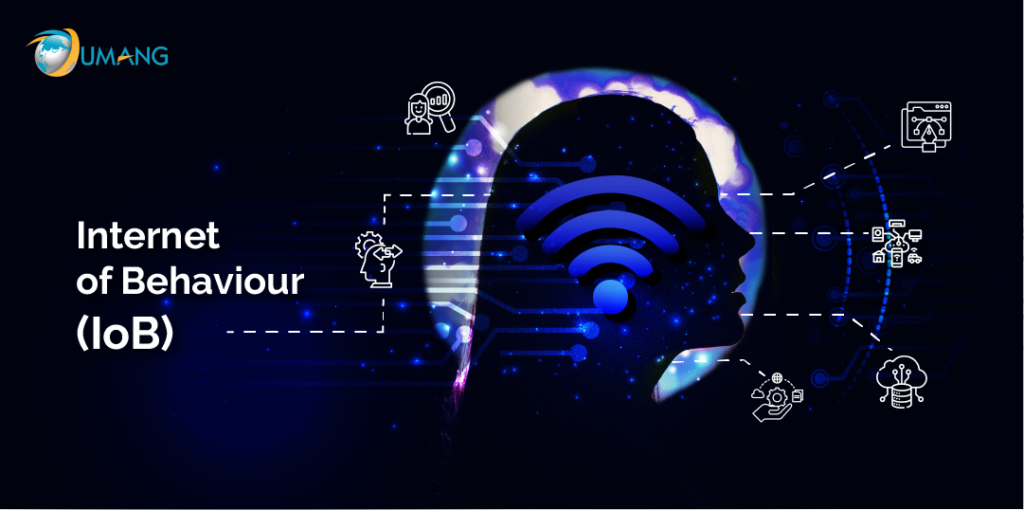Introduction
Over the years, different concepts have been brought into light to establish a relational equation between human behavior and psychology and data obtained from different endpoints. It can be human choices on an e-commerce platform or sentiments related to online surveys for a company. Most data analytical models based on ML and NLP are dedicated to revealing patterns in human behavior and thought processes.
Recently, a new concept has emerged and has already stirred the market — Internet of Behavior. IoB is still on the rise but has shown immense contribution towards unraveling human behavior and thoughts using datasets and data analytical models. Given this fact, the below discussion will illustrate the basic facts of Internet of Behavior, starting with the concept’s definition.

What is Internet of Behavior?
Internet of Behavior is a new concept in R&D where user data is fed to an analytical model with the intention of understanding human psychology and behavioral patterns behind their purchases. IoB has major applications in e-commerce, healthcare, customer retention and management, and other such fields that require businesses to interact directly with end users.
IoB combines three major technologies to generate accurate data analytical results. These are:
1. Behavioral science: It focuses on understanding human behavior and finding patterns in similar instances.
2. Edge analytics: This concept is regarding collecting and analyzing datasets at the edge, i.e., from IoT sensors and mobile devices.
3. IoT: Also known as Internet of Things, these devices and sensors form the physical bridge between end users and data analytical models to be used for Internet of Behavior.
What are the benefits and challenges of Internet of Behavior?
Advantages of Internet of Behavior
1. IoB can be used to generate more sales by understanding human psychology behind the purchases and targeting meaningful prospects. This will help ecommerce businesses to enhance the sales and also streamline the marketing and sales funnels.
2. Marketing campaigns can be optimized easily with the help of data results generated through IoB. This will help businesses to deploy necessary changes according to participants’ behaviors and thought processes.
3. Also, Internet of Behavior will play a huge role in revealing the user journeys across various platforms for an ecommerce business, like the time taken to make a purchase decision, user experience, and many more.
4. Customer satisfaction can be further enhanced with the help of Internet of Behavior as the data analytical results will reveal the loopholes in business strategies concerning user experience, customer retention, and customer acquisition.
5. The health sector will also benefit a lot from the implementation of Internet of Behavior in monitoring processes, especially the ones related to real-time data capture and analysis.
Challenges of Internet of Behavior
1. Since the integration of IoT devices and sensors is still at the novice level, it can be a problem for all business domains to acclimate to Internet of Behavior so early.
2. The lack of skills will also pose a challenge in the technology adoption process for Internet of Behavior. So, upskilling is required and must be handled at a large-scale.
3. The accuracy and relevance of data analytical results from Internet of Behavior need to be addressed because human behavior and its patterns are subjective and might change from time to time.
Use cases and purposes of Internet of Behavior
The Internet of Behavior is nowadays more focused on deciphering human behavior and the thought process behind their purchasing decisions. Owing to this, the following are some of the major use cases that can be elaborated to understand the real-time implementation of IoB.
1. Assisting drivers to know their car performance, especially in cases where acceleration and braking are variable.
2. Personalizing shopping recommendations based on user choices of products added to the shopping cart or wish list.
3. Optimizing real-time promotional content on e-commerce sites based on the buying history of users.
4. Alerting users about elevated heart rate and breathing rates based on their fitness activity history.
How is the Internet of Behavior related to the Internet of Things?
The direct relation between Internet of Behavior and Internet of Things is the implementation. IoT devices and sensors are required to gather data from end users through edge computing while IoB is the technical concept whose implementation will help find patterns in the user data pertaining to behavior and thought process.
Conclusion
With the implementation of Internet of Behavior, businesses will have an upper hand in understanding the customer’s point of view and the factors driving behavioral and psychological changes. However, to make it successful, the challenges must be addressed and handled carefully to ensure there is no discrepancy in the user data collected and the analytical results generated.